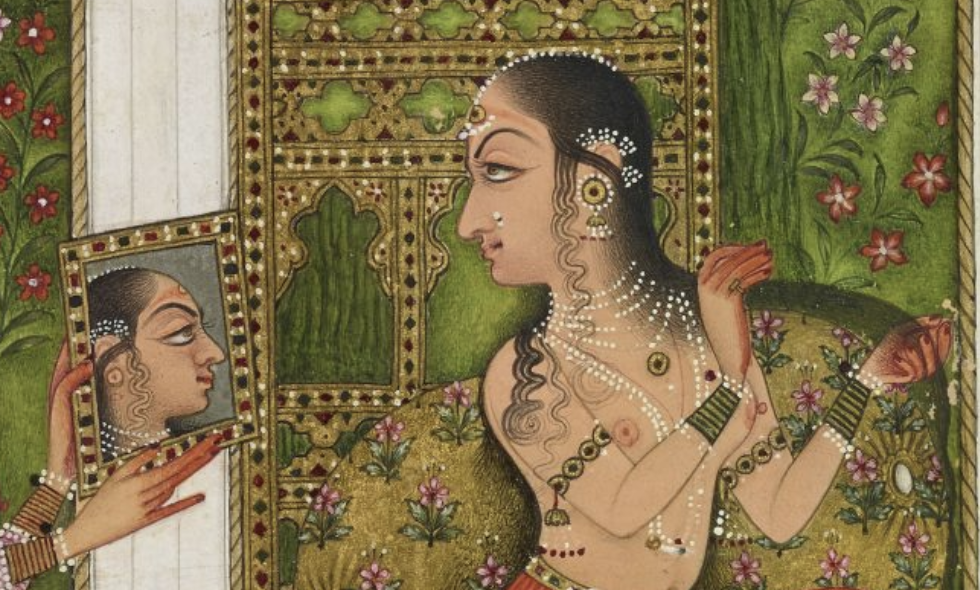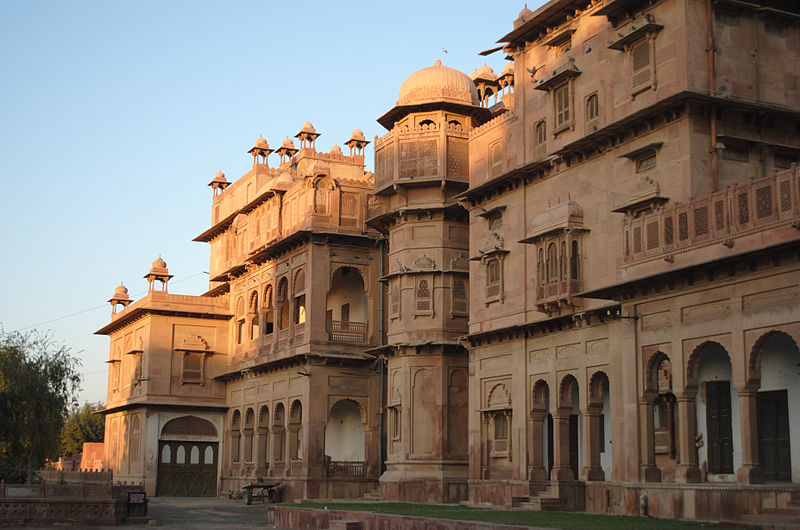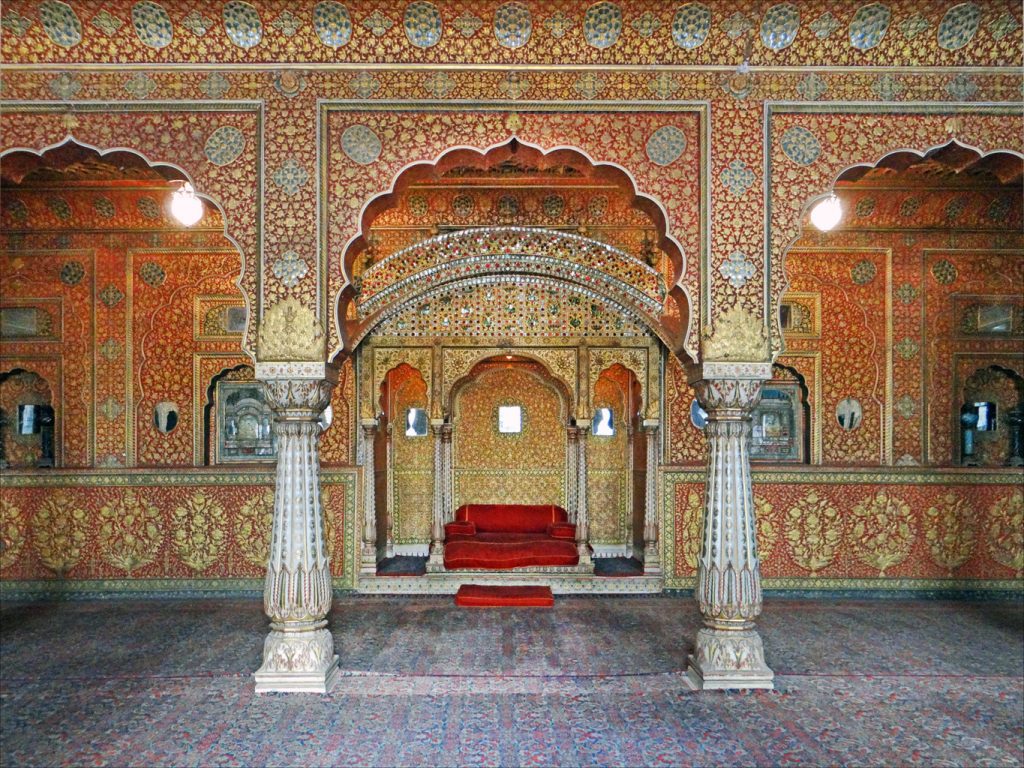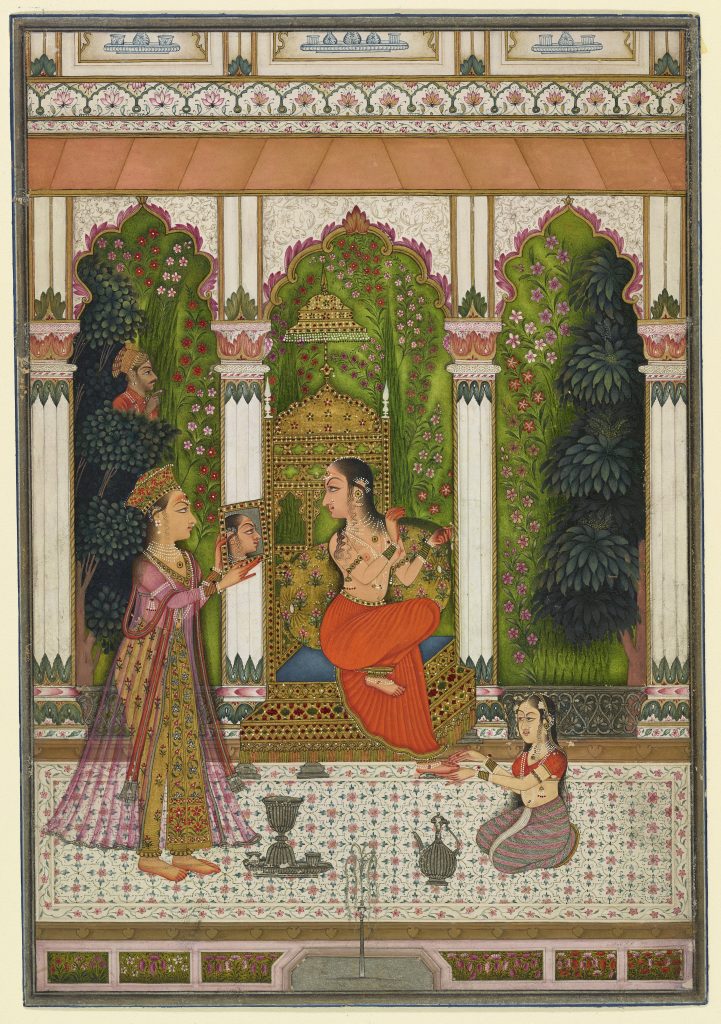Vilaval Ragini
Vilaval Ragini
India, Rajasthan, Bikaner, ca. 1720
Opaque watercolor and gold on paper
Courtesy the Arthur M. Sackler Gallery, Smithsonian Institution, Washington, D.C.: Purchase and partial gift from the Catherine and Ralph Benkaim Collection — funds provided by the Friends of the Freer and Sackler Galleries, S2018.1.85
While many of the ragamala paintings show the longing of separated lovers, this painting only expresses joy and anticipation of love. With the help of her friend and confidante the heroine completes her toilette ritual in preparation for her rendezvous with the hero. This popular scene has been reproduced in many ragamala sets. (Please see the other examples of Vilaval Ragini in this exhibit) The image of a lady looking in the mirror has been a common theme in Indian art since at least the second century BCE. Mirrors have been considered an auspicious symbol and have often been used symbolically in Indian love poetry.
The role of the confidante was to act as a liaison between the heroine and the hero. Since the heroine was often socially limited to the confines of her palace, it was important to have a trusted friend whose economic and social position permitted her to roam freely and carry messages between the lovers. The confidante also provided advice and encouragement to the heroine, as she experienced the highs and lows of love.

Red-lac dye (alta) is produced by crushing the lac insect. Women still occasionally use the red dye in India to paint their feet for ceremonious occasions such as weddings. It differs from the better-known dye henna in both color and source: henna, a warm brownish red, is from a plant while the bright red lac dye is from an insect.
While many of the ragamala paintings show the longing of separated lovers, this painting only expresses joy and anticipation of love. The viewer is immediately drawn to the heroine, who is highlighted by her central location and brightly colored, vermillion skirt. Her confidante is also elegantly dressed in a diaphanous robe. The maid sitting on the floor beautifies the heroine’s feet with a red-lac dye. The heroine and her confidante show evidence that the red dye has already been applied to their hands. The extravagant clothing, ornate jewelry, and makeup are all part of ornamentation, which was a crucial, cultural expression. In fact, the use of expensive jewelry and elegant ornamentation is still used for special occasions by many in India.

This painting was created inBikaner, which is located in the Thar Desert of Rajasthan. Construction on the palatial Junagadh Fort began in the sixteenth century under the reign of Raja Rai Singhji.

The fort houses both military defenses and luxurious palaces. The interiors are embellished with variety of metallic pigments and wall paintings in floral designs. Presenting the court in grand fashion, the Anup Mahal – a room for private meetings – shimmers with red and gold paint, ornamental colored glass, and mirrors
The concept of the hero, heroine, and the confidante had been a theatrical and literary trope for centuries. After the twelfth century, during the popularity of the bhakti movement, Hindu poets frequently chose to replace the unnamed heroes and heroines, with the god Krishna, and his human lover, Radha, and devotees began to understand the love story of Krishna and Radha as an analogy for their own close relationship with god.
